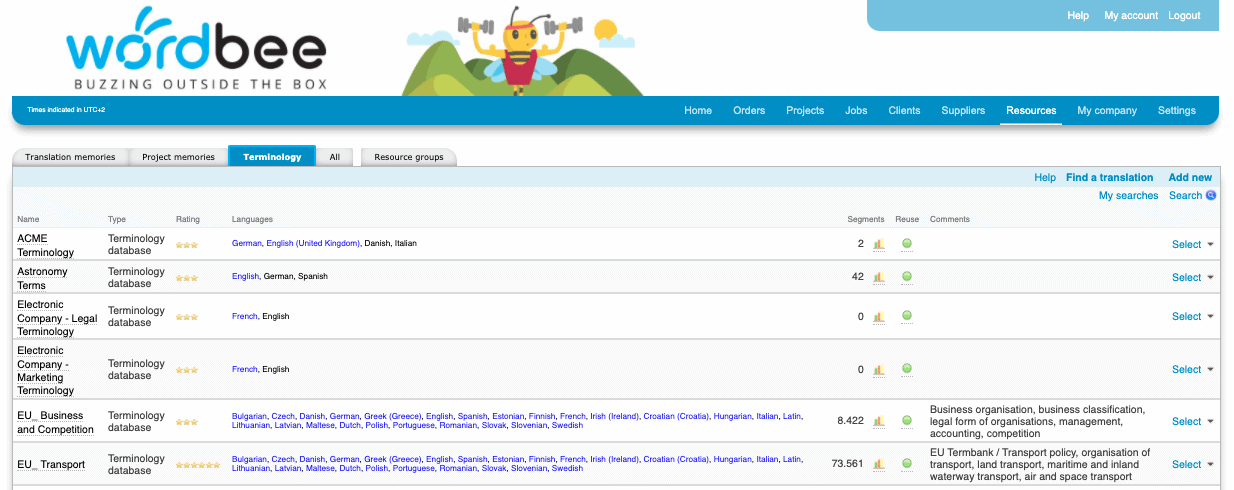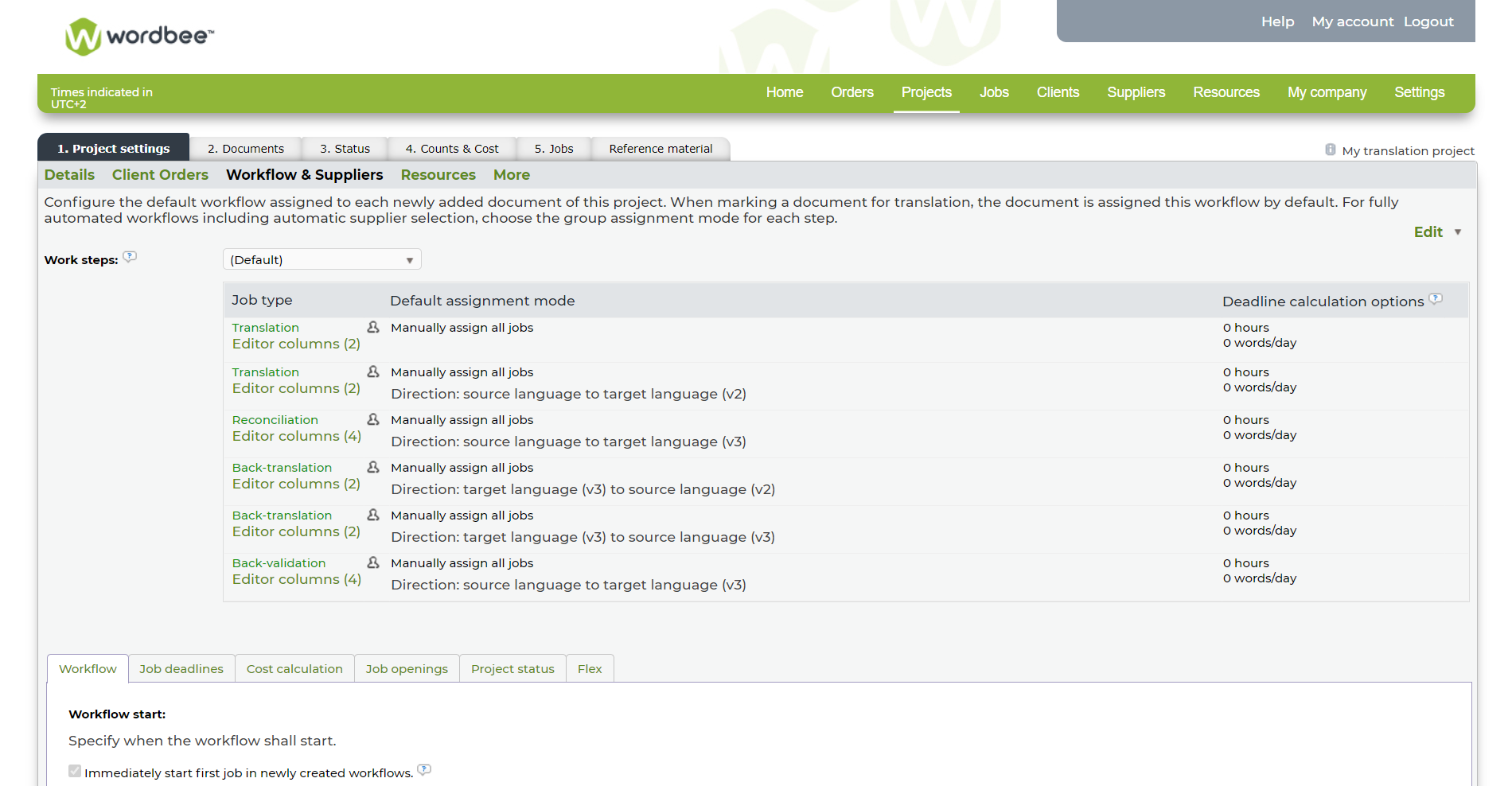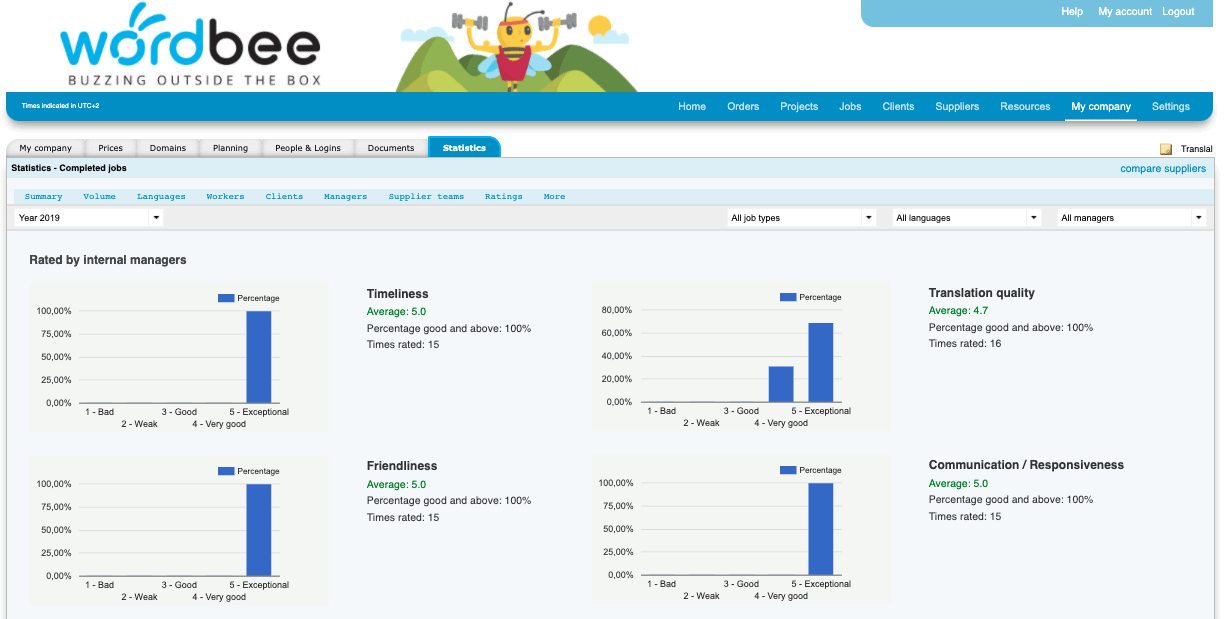5 Ways To Manage Translation Quality In Wordbee
According to a recent Nimdzi survey, on-time delivery (84% of respondents) and quality of translation (83%) are the decisive elements when shopping for a translation/localization partner.
It comes as no surprise that quality, in all its aspects, counts towards a company’s success, because growth and expansion of a business are much easier when core products or services remain consistently good.
However, we live in a flawed world, where humans make mistakes and machines break when you least expect it. The secret to delivering constant quality lies in preventing errors as much as possible, avoiding rework and, ultimately, saving time and money.
But, as an LSP or a manager of an in-house localization department, how will you translate this “secret” into everyday practice? In this article, we summarize 5 strategies to help you keep up with the basic principles of quality management and hit the ground running toward high performance.
#1 Consider the source
The quality of a translation (whether done by humans or by machines) is intrinsically linked to the quality of the source content. So, design your content keeping in mind the three pillars of the authoring process: clarity, consistency and conciseness.
Prepare authoring guidelines with information about the target groups and examples of your corporate voice and tone.
Create templates for structured content, for example, technical and educational documents. A well-designed template that is also easy to read will make your content future-proof.
For more guidance about creating and preparing source files, take a look at our previous articles:
#2 Maintain your language data spick-and-span
You can also achieve a certain consistency in your company’s communication material by using translation memories (TMs) and terminology databases.
Consider using two kinds of TMs:
- Project memories that are automatically created and filled as translators type within the various segments.
- A master memory that contains all key data regarding a domain, a client and the pre-filtered, and relevant content from the project memories.
Terminology databases will also benefit a wide group made up of:
- Translators, who will be able to translate more accurately.
- Clients, who save time and money because no rework is needed and the documentation will always be up-to-date and accurate, with less risk of liability issues.
- Consumers, who are able to understand the documentation/communication without confusion. This, in turn, will result in less complaints or support requests.
In Wordbee, all translations are saved to your project memory and consolidation into the master memory can be automated. You can easily view your TMs as well as terminology databases in the resources section:
To dig deeper into language data, have a look at our previous articles:
- Three Ms: Master Memory Maintenance
- Strategies To KonMari Your Translation Memories
- Terminology Management: Getting Started
#3 To each content typology its own workflow
Blog posts, infographics, white papers, product specifications, e-mails, e-books… The list of content typologies is endless.
You can find many of them within one single project, each requiring different localization criteria and, therefore, a customized workflow. For example, a minimalist stream for perishable content (e.g. machine translation and one round of light post-editing), a more traditional TEP (translation/editing/proofreading) workflow for content with a longer shelf life, or a more detailed workflow with back translation & reconciliation for medical texts.
In Wordbee, project managers can customize workflow templates to accommodate specific needs and manage complex projects. Here is an example of what such a custom workflow could look like.
#4 Automate QA Checks
Within a project’s workflow you have the option to automatically run a Quality Assurance (QA) check after the completion of a job. QA profiles with certain rules can be saved in advance and selected to be used to run the QA check in order to guarantee that the right set of rules is followed, based on the client’s requirements and expected quality level.
Another option is to have your vendors perform a mandatory QA check before delivery to fix nuisance errors, like dates and numbers, formatting tags, forbidden terms, spaces, punctuation, etc.
In Wordbee, you can choose between mandatory & automated QA checks in the workflow settings:
In addition to automated and mandatory QA checks, a real-time Quick QA feature as well as the Spellchecker help translators avoid errors while they are translating or proofreading within Wordbee.
Here are more resources about Quality Assurance and Quality Control:
#5 Measure, analyze, improve, repeat
This is the motto at the base of every total quality management (TQM) methodology.
If chosen wisely, Key Performance Indicators (KPIs) can shed a light on your vendor and project management performance. For example, you could create reports to:
- measure delivery, rework, or full cycle time in order to improve process efficiency;
- vet, select and rate vendors to find the perfect fit for each project;
- monitor capacity utilization rate, latency time and uptime rate to keep track of your technological investment.
This is what the vendor rating statistics could look like in Wordbee:
More information on Business Analytics and KPIs in Wordbee:
Wordbee’s translation management solutions offer a wide range of features to manage your localization quality. Contact us for more information.
Is this interesting?
Subscribe to get interesting localization podcasts, discussion panels, and articles every month.




















